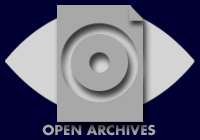The Production of Conversational Humor by Flouting Gricean Maxims in the Sitcom The IT Crowd
Ilsa Krisdwiyani(1), Sharifah Hanidar(2*)
(1) Universitas Gadjah Mada
(2) Universitas Gadjah Mada
(*) Corresponding Author
Abstract
This study focuses on the Gricean maxim floutings found in the production of verbal humor by the characters in the show The IT Crowd, seasons one and two. This research aims to identify and classify the flouting of maxims, explain the rhetorical strategies employed, and the functions behind each flouting of the humorous utterances in the sitcom. Qualitative methods were used in analyzing the data, which are the humorous utterances resulted from the maxims flouting found in the first 12 episodes of the series. However, quantitative data is also taken into consideration in the analysis. In the series, a total of 102 occurrences were identified as maxim floutings. The most frequently occurring maxim flouting is of the quality maxim with 56 occurrences (54.90%).
The result shows the characters produced verbal humor by flouting the conversational maxims using varied rhetorical strategies. Their most preferred rhetorical strategy is allusion, with 12 occurrences (11.70%) found in the series. It was also discovered that the characters use a variety of rhetorical strategies when they flout the maxims to achieve different communicative goals. The most frequent goal to appear is self-disclosure, with 26 data indicate the speakers flout the maxims to disclose personal information through humor.Keywords
Full Text:
PDFReferences
Addiningrum, B. (2018). The flouting of Gricean maxims through the use of rhetorical devices to create humor in the TV series Hannah Montana (Unpublished undergraduate thesis). Universitas Gadjah Mada.
Andersen, N. (2013). Flouting the maxims in comedy: An analysis of flouting in the comedy series Community (Bachelor’s thesis). Karlstad University.
Atalla, A. (Executive Producer). (2006-2013). The IT crowd [TV series]. Talkback Thames; Channel 4 Television Corporation.
Attardo, S. (1993). Violation of conversational maxims and cooperation: The case of jokes. Journal of Pragmatics, 19(6), 537-558. https://doi.org/10.1016/0378-2166(93)90111-2.
Attardo, S. (1994). Linguistics theories of humor: Humor research (Vol. 1). De Gruyter Mouton. https://doi.org/10.1515/9783110219029.
Attardo, S. (2001). Humorous texts: A semantic and pragmatic analysis. De Gruyter Mouton. https://doi.org/10.1515/9783110887969.
Berger, A. A. 1993. An Anatomy of Humor. Transaction Publishers.
Birner, B. (2013). Introductions to pragmatic. Wiley-Blackwell.
Cutting, J. (2002). Pragmatics and discourse: a resource book for students. Routledge.
Dornerus, E. (2005). Breaking maxims in conversation: A comparative study of how scriptwriters break maxims in Desperate Housewives and That 70’s Show (Master’s thesis). Karlstad University.
Dynel, M. (2008). There is method in the humorous speaker’s madness: Humour and Grice’s model. Lodz Papers in Pragmatics, 4(1), 159-185. https://doi.org/10.2478/v10016-008-0011-5.
Dynel, M. (2009). Beyond a joke: Types of conversational humour. Language and Linguistics Compass, 3(5), 1284-1299. https://doi.org/10.1111/j.1749-818x.2009.00152.x.
Dynel, M. (2013). Irony from a Neo-Gricean perspective: On untruthfulness and evaluative implicature. Intercultural Pragmatics, 10(3), 403-431. https://doi.org/10.1515/ip-2013-0018.
Dynel, M. (2017). But seriously: On the conversational humour and (un)truthfulness. Lingua, 197, 83-102. https://doi.org/10.1016/j.lingua.2017.05.004.
DiCioccio, R. (2012). Humor communication: Theory, impact, and outcomes. Kendall Hunt Publishing.
Graham, E.E., Papa, M.J., & Brooks, G.P. (1992). Functions of humor in conversation: Conceptualization and measurement, Western Journal of Communication, 56(2), 161-183. https://doi.org/10.1080/10570319209374409.
Grice, H. P. (1989). Studies in the way of words. Harvard University Press.
Grundy, P. (2000). Doing pragmatics (2nd ed.). Hodder Arnold Publication.
Holmes, J., & Marra, M. (2002). Over the edge? Subversive humor between colleagues and friends, HUMOR, 15(1), 65-87. https://doi.org/10.1515/humr.2002.006.
Huang, Y. (2007). Pragmatics. Oxford: Oxford University Press.
Mey, J. (2001). Pragmatics: An introduction (2nd ed.). Oxford: Blackwell Publishing.
Moon, R. (2014). From gorgeous to grumpy: Adjectives, age and gender. Gender and Language, 8(1), 5-41. https://doi.org/10.1558/genl.v8i1.5.
Nemesi, A. L. (2015). Levels and types of breaking the maxims: A neo-Gricean account of humor. Intercultural Pragmatics, 12(2), 249-276. https://doi.org/10.1515/ip-2015-0012.
Potter, J. (1990). Independent television in Britain, 1968-80: Companies and programs (Vol. 4). Palgrave Macmillan UK. https://doi.org/10.1007/978-1-349-09907-8.
Savkaničová, M. (2013). Pragmatic analysis of ironic humour in Black Books (Bachelor’s thesis). Masaryk University.
Schniederjans, M. J. Cao, Q., Olson, R. J. (2004). Consumer Perceptions of Product Quality: Made in China. Quality Management Journal, 11(3), 8–18. https://doi.org/10.1080/10686967.2004.11919118.
The IT Crowd. (n.d.). IMDb. Retrieved March 5, 2020, from https://www.imdb.com/title/tt0487831/.
Thomas, J.A. (1995). Meaning in interaction: An introduction to pragmatics. Routledge. https://doi.org/10.4324/9781315842011.
Xiaosu, Y. (2010). Conversational implicature analysis of humor in American situation comedy “Friends” (Doctoral dissertation). Universiteit Gent.
Article Metrics
Refbacks
- There are currently no refbacks.
Copyright (c) 2022 Ilsa Krisdwiyani, Sharifah Hanidar

This work is licensed under a Creative Commons Attribution-ShareAlike 4.0 International License.
Lexicon Office
| English Department Faculty of Cultural Sciences, Universitas Gadjah Mada Soegondo Building, 3rd Floor, Room 306 Yogyakarta, Indonesia 55281 Telephone: +62 274 513096 Email: lexicon.fib@ugm.ac.id ISSN: 2746-2668 (Online) |
 LEXICON is licensed under a Creative Commons Attribution-ShareAlike 4.0 International License. |
Lexicon is indexed in












